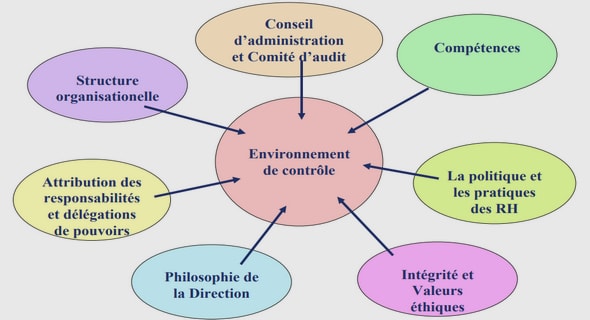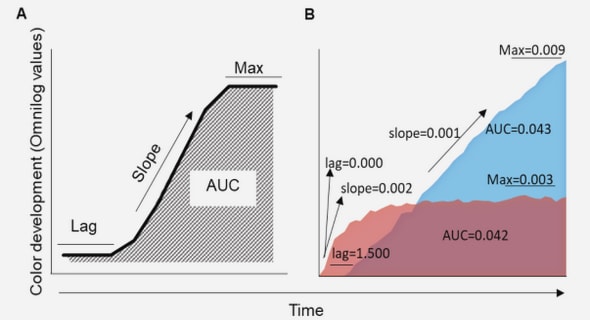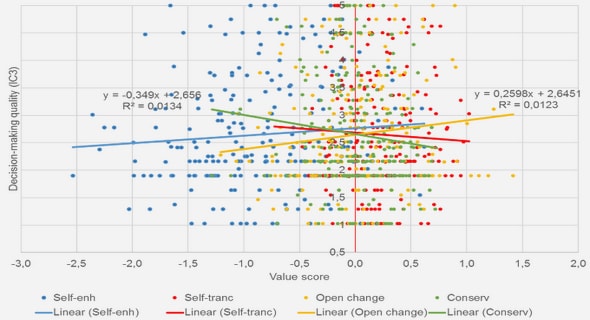Get Complete Project Material File(s) Now! »
Experimental study of flow in complex systems
There are many methods and challenges in researching flow of fluids in complex systems such as granular materials. However, real-world systems are difficult to analyze; obviously we can not directly see what is going on in the soil during such processes, and we cannot completely recreate such systems at the lab scale. In experimental geophysics and complex matters physics, this topic is widely studied in experiments where a complex system is decomposed into simpler analog models such that one can observe and investigate isolated fundamental processes which play a role in the bigger picture. A widely used tool for simplified flow experiments is the Hele-Shaw cell, which is a thin cell made up of two glass plates separated by a very small gap (usually 0.1 – 1 mm) compared to their surface area. In a Hele- Shaw cell, the geometry of the problem is reduced from 3-D to quasi-2-D, the cell orientation can be used to effectively adjust or remove the influence of gravity, andperhaps most importantly one can directly see what is going on during experiments. In such a simplified system, a sample can be prepared to represent a transparent quasi-2-dimensional rock/soil analog. Experimental data can be captured in the form of time-lapse image sequences, such that post-experiment image processing and analysis yield information about the growth and shape of the flow patterns over time, as well as eventual deformation fields in the host medium. Similarly, numerical models may be created and validated in 2-D before expanding to the more complicated 3-D case.
In early research on the flow of two immiscible fluids in Hele-Shaw cells, it was found that the invasion by a less viscous fluid into a more viscous fluid results in a displacement instability where viscous fingering patterns form [4]. This means that the invading fluid displaces the more viscous one in separated finger-like intrusions, while leaving the fluid inbetween the fingers less or not displaced. Following an increased interest in this phenomenon, two-phase flow have been widely studied in quasi-2-dimensional porous media confined in thin cells with radial and linear geometries [2, 39–50]. In horizontal cells containing rigid disordered porous media, the unstable invasion patterns during drainage are found to be fractal and either form an invasion percolation cluster [51] in the capillary fingering regime [52,53], or long thin fingers resembling Diffusion Limited Aggregation (DLA) patterns in the viscous fingering regime [1, 54]. The flow regime depends on the ratio between the driving and stabilizing forces involved in flow and pore-invasion. In systems where air is injected with high enough overpressure into dry dense granular media in thin cells, granular fingering patterns (channels empty of particles) emerge as a result of pneumatic fracturing [55–59]. This granular fingering instability is also observed in liquid saturated dense porous media where the same fluid is injected [60]. The patterns formed during fluid injection into a granular medium, and evolution of the fluid-solid interface, have been found to resemble viscous fingering [57]. The decompaction, fluidization regimes, and coupling between air and granular flow have been studied for air injection at different overpressures in cells with open outer boundary [56,58]. A similar confined system, where the granular medium cannot leave the cell, was studied in numerical simulations in [59,61]. During air injection at different overpressures they found that fractures grow faster, longer, as well as coarsen with increasing injection pressure. Further, by varying the interstitial fluid viscosity, two flow regimes were identified; one with finely dispersing bubbles and large scale collective motion of particles, the other one with build-up of a compaction front and fracturing. These flow regimes depend on whether the medium is primarily deformed by the imposed pressure gradient in the fluid, or interactions through particle contacts.
This in turn depends on the diffusivity of the interstitial fluid pressure in the granular medium. The main difference between the viscous- and granular fingering instabilities is the absence of interfacial tension in the granular case [58]. However, both instabilities are driven by the pressure gradient across the defending medium, which is largest on the longest finger tips. Therefore, more advanced fingers grow on expense of the less advanced ones. Another notable difference between air injection into a dry granular medium and a liquid saturated one is that the overpressure initially diffuses into the packing in the dry case (compressible flow), while it is already a steady-state Laplace field over the defending liquid in the saturated case (incompressible flow).
Moreover, combinations of immiscible and granular flow in thin cells have been studied, during air injection into liquid saturated granular media and suspensions.
The characteristics of emerging patterns and behavior of the media depend on injection rate and the competition between mobilized friction and surface forces [5, 40, 43, 51, 62–71]. For example, one observes flow regimes such as two phase flow in rigid porous media [40,51,69–71], capillary fracturing [63], stick-slip bubbles and labyrinth patterns [5,43,62–68]. In the opposite case, during liquid injection into dry granular media [42], the flow behavior goes from stable invasion towards granular fingering for increasing flow rate and viscosity of the invading fluid. At intermediate conditions, fractures open up inside the invaded region. The same trend is shown in numerical studies for gas injection into granular media containing the same gas [59].
Granular fingering instabilities have also been studied in closed vertical cells, where gravity drives the flow as heavier beads fall down from a granular layer at the top of a lighter fluid layer [45,47,48,72–74]. When the beads detach at the front, they form fingers of falling granular material surrounding finger-like bubbles of rising fluid.
These fingers are found to coarsen over time until they reach a typical wavelength depending on the interstitial fluid and bead size.
The motivation for investigating fundamental properties of flow in porous media in table-top experiments is to develop theoretical models describing the mechanisms of deformation, dynamic evolution and structure of flow patterns on pore- and sample scale, as well as how these phenomena scale with e.g. size, time and driving forces. Later on, such models can be considered when investigating more complex systems such as in 3-D geometry and natural phenomena.
The focus of this thesis
Based on table-top experiments and numerical simulations, we study the fast processes of fluid flow in deforming granular media and evolving fractures. Air is injected at constant overpressure into saturated or dry granular media confined inside Hele-Shaw cells. We vary boundary conditions, injection pressure and initial saturating fluid of the medium. In addition, we present a sub-project focused on slow processes with experiments on reactive flow in fractured calcite samples. The rest of this section presents a summary of the specific experiments we performed.
We present an exploratory study where we experiment with the combination of two-phase and granular flows by performing air injection into saturated monolayers of beads. Here, we study the formation of viscous fingering and fracturing patterns that occur when air at constant overpressure invades a radial Hele-Shaw cell containing a liquid-saturated deformable porous medium, i.e. during the flow of two non-miscible fluids in a confined granular medium at high enough rate to de- form it. The sample is created by preparing monolayers of glass beads in cells with various boundary conditions, ranging from a rigid disordered porous medium to a deformable granular medium with either a semi-permeable or a free outer boundary.
By injecting air at constant overpressure into a deformable saturated monolayer of beads, we have a system where particles may be displaced by a viscous pressure gradient and/or interfacial forces between the two fluids. Since it is a single layer of beads without imposed confining pressure, granular stress is expected to depend on the boundary condition and number of particles in contact ahead of the flow, rather than build-up of normal stress against the plates. As a result of competition between viscous and capillary forces, and build-up/relaxation of friction during flow, we observe transitions between finger opening and pore invasion in the viscous fingering regime, for example during initial compaction or outer decompaction during flow in the open cell. The resulting patterns are characterized in terms of growth rate, average finger thickness as function of radius and time, and fractal properties. Based on experiments with various injection pressures, we identify and compare typical pattern characteristics when there is no deformation, compaction, and/or decompaction of the porous medium. We show that the patterns formed have characteristic features depending on the boundary conditions. The study is part of fundamental research on pattern morphology in various deforming systems, which is important for increased understanding of flow in any deformable porous medium.
Next, we present an experimental study on flow regimes and pattern formation during air injection into confined granular media. In this experiment, we inject air at constant overpressure into a dry dense granular medium inside a linear Hele- Shaw cell, where air escapes at the outlet while beads cannot. As opposed to similar experiments with open outer boundary conditions [56,58,60], after the flow compacts the medium there is no decompaction. Due to the confined nature of the experiment, it is thought to be a laboratory analog to pneumatic and hydraulic fracturing of tight rock reservoirs where the free boundary at the surface is very distant from the injection zone, i.e. in a situation where fracture propagation stops long before reaching a free surface, such that the surrounding medium is not decompacted.
We thus observe the material behavior (at high enough overpressure to displace beads) to have a transition from fluid-like to solid-like during experiments, and that eventual invasion patterns initially expand like viscous fingering in the fluid-like regime, crossing over to stick-slip propagation of the tips as the medium becomes more solid-like, until it reaches a final structure when the compacted medium has reached a completely solid-like behavior. What is less obvious, is how the flow patterns in this system change with the injection pressure. By varying the imposedoverpressure, we identify and describe the different flow regimes. The motivation of this setup is to study the granular fingering instability in compacting granularmedia. We characterize typical properties of the emerging structures, such as their fractal dimension, typical thickness and invasion depth, growth dynamics, as well as flow regimes depending on injection pressure.
Pattern formation and analysis
Many structures formed in different processes in nature appear as similar patterns, which is sometimes explained by their common growth dynamics. For example, the flow patterns formed in our experiments result in structures similar to other natural patterns occuring in Laplacian growth systems, e.g. DLA clusters, viscous fingers in empty Hele-Shaw cells, manganese dendrites, or lightning bolts as shown in figure 3.1. In such systems, ramified structures expand at a rate proportional to the gradient of a Laplacian (∇2φ = 0) potential field, such that v ∝ ∇φ. This type of patterns is in the DLA universality class, where a fractal dimension of D = 1.71 is expected [2,40]. However, the fractal dimensions found for viscous fingering patterns in porous Hele-Shaw cells usually have values of D ∈ [1.53 − 1.62] [1, 2, 5]. It has been established that flow in porous media is better described by another Laplacian model, the Dielectric Breakdown Model (DBM), where the interfacial growth rate is proportional to the potential gradient of a power η higher than 1, i.e. v ∝ (∇φ), where η = 2 for viscous fingers in porous media [2,40]. A feature of pattern growth which is typical for Laplacian growth systems is that there is an active growth zone on the tips of a frozen structure due to screening of the potential gradient by the most advanced parts of the structure. By looking closely at the patterns in figure 3.1, we notice that they have selfsimilar features over a range of scales, e.g. a smaller branch resemble the whole larger pattern. Another good example of self-similarity over a limited range of scales is the fern shown in figure 3.2. A common method to characterize the self-similar feature of a pattern is to analyze its fractal dimension, which is a spatial scaling exponent. In other words, if the fractal dimension of a pattern exists, it reveals information about how the pattern fills the space it occupies. There are different ways to estimate the fractal dimension of a pattern [78, 79]. Presented here are three methods we used for studying invasion patterns contained in binary images.
For a radially growing fractal pattern, its area N (mass) scales with its size r (radius) according to a power-law relationship referred to as the mass-radius relation, N(r) ∝ rDm.
Binary images: Extracting patterns to analyze
The experimental image data in this thesis are sequences of grayscale images. These images are processed in Matlab to segment out the patterns into binary images, i.e. images with either black or white pixels, where the white pixels (value=1) represent the pattern and the black pixels (value=0) represent the background, or the beadfilled region. After obtaining binary images of the patterns, we can quantify for example the pattern radius or length, mass (number of white pixels), and fractal dimensions as explained in section 3.
For the images from experiments presented in chapter 4, pattern segmentation is done by first subtracting the grayscale values of each image in the sequence with the initial image to remove most of the background. Then, a suitable threshold value is defined such that all pixel values less than the threshold are set to 0 while the rest, being a part of the pattern are set to 1. In the deformable experiments, deformations cause speckle fluctuations in the difference images, so an additional step of removing noise must be done where small clusters of white pixels not connected to the main cluster are set to 0. Figure 3.3 shows an example of pattern segmentation in a deformed medium.
For the granular media presented in chapters 5 and 6, we obtain binary image sequences from the raw data by thresholding each frame with the initial image as reference, such that pixels having a value less than 30 % of the corresponding initial value becomes white and the rest remain black (in these experiments, the patterns are darker than the medium).
Digital Image Correlation: Obtaining displacement fields
Frame-to-frame granular displacement fields are obtained with Ncorr, an open-source Matlab based Digital Image Correlation (DIC) software [81,82]. The basic principle of Ncorr is to cross-correlate subwindows of one image with an image taken at a later time to obtain displacement vectors ~U (x, y) = u(x, y)~i + v(x, y)~j located at (x, y) positions in the first image, thus indicating the displacement of the subwindows between the images. In brief steps, the Ncorr algorithm works as follows:
1. A subwindow at a selected position in the first image is cross-correlated with the succeeding image by calculating the normalized cross-correlation in Fourier space. This yields the displacement with integer pixel accuracy, i.e. the initial guess.
2. To estimate the displacement with sub-pixel accuracy, a quintic B-spline interpolation of the graymap in the vicinity of the initial guess is calculated. This with 75 hPa injection pressure (A), and the resulting binary image after segmentation of the air cluster (B), where the active pixels belonging to the cluster is shown in white and the inactive background pixels are shown in black. The dark injection region where it is difficult to separate saturated and invaded parts is indicated in gray, and is excluded from our analysis. permits the approximate graylevel to be evaluated at non-integer coordinates in this area.
3. In the interpolated area, the subwindow is iteratively translated and deformed in small steps towards a best fit, done by minimizing a cost-function. This gives the displacement with sub-pixel accuracy.
4. The full image displacement field is found by the Reliability Guided DIC method; The remaining subwindows are analyzed in queue, one after the other, by using solved displacements of a nearest neighbor as initial guess. Thus, only steps 2 – 3 are repeated for the remaining subwindows. The queue of subwindows is updated at each iteration, such that the algorithm always analyzes the one with the best correlation at the initial guess.
Table of contents :
1 R´esum´e fran¸cais du contenu scientifique
1.1 Article 1 – Pattern d’invasion en ´ecoulement diphasique `a travers un milieu poreux d´eformable
1.2 Article 2 – Fracturation pneumatique dans des milieux granulaires confin´es
1.3 Article 3 – ´Evolution de la pression et d´eformation des milieux granulaires confin´es lors de fracturation pneumatique
1.4 Article 4 – L’´evolution de l’aero-fractures et les caract´eristiques des ´emissions acoustiques dans un milieu poreux
1.5 Article 5 – Localisation bas´ee sur l’homog´en´eit´e d’´energie estim´ee de la source
2 Introduction
2.1 Context and motivation
2.2 Experimental study of flow in complex systems
2.3 The focus of this thesis
3 Basic concepts and methods
3.1 Flow in porous media
3.2 Pattern formation and analysis
3.3 Image processing
3.3.1 Binary images: Extracting patterns to analyze
3.3.2 Digital Image Correlation: Obtaining displacement fields
4 Invasion patterns during two-phase flow in deformable porous media
4.1 Motivation
4.2 Methodology
4.2.1 Experimental setup
4.2.2 Three cases of boundary conditions
4.3 Main results
4.4 Paper 1: Invasion patterns in deformable porous media
5 Pneumatic fractures in confined granular media
5.1 Motivation
5.2 Methodology
5.2.1 Experimental setup
5.3 Main results
5.4 Paper 2: Pneumatic fractures in confined granular media
6 Pressure evolution and deformation of confined granular media during pneumatic fracturing
6.1 Motivation
6.2 Methodology
6.2.1 Experimental setup
6.2.2 Pressure simulation
6.3 Main results
6.4 Paper 3: Pressure evolution and deformation of confined granular media during pneumatic fracturing
7 Reactive flow in fractured chalk
7.1 Motivation
7.2 Methodology
7.2.1 Samples and sample preparation
7.2.2 Reactive flooding
7.2.3 Obtaining local surface profiles
7.3 Analysis and results
7.4 Conclusion
8 Conclusion and perspectives
9 Co-authored papers
9.1 Paper 4: Bridging aero-fracture evolution with the characteristics of the acoustic emissions in a porous medium
9.2 Paper 5: NOTE: Localization Based On Estimated Source Energy Homogeneity
Bibliography


